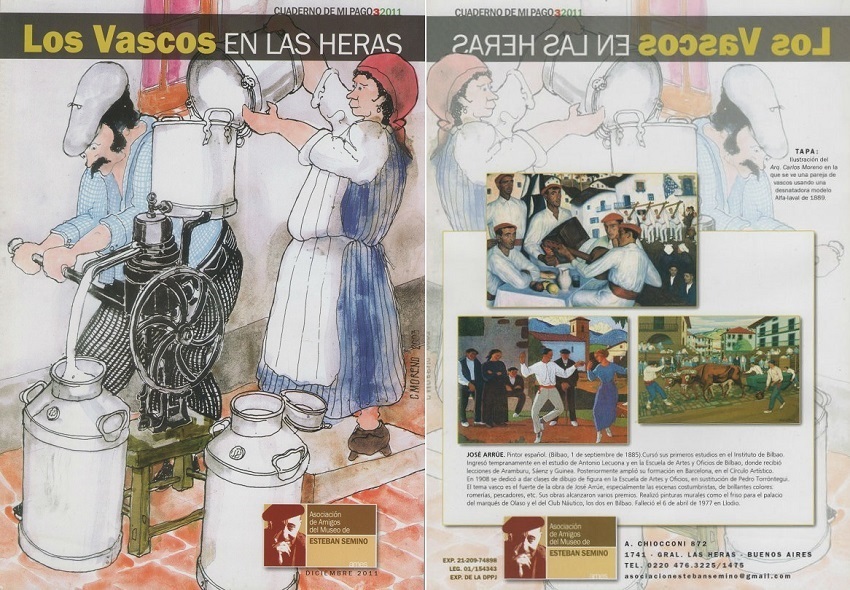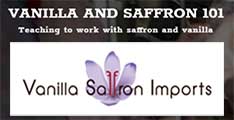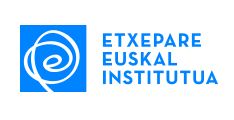Gral. Las Heras, Argentina. Invited by Amalia Barbieri, widow of painter Esteban Semino, to be in charge of the artist’s legacy, members of the AMES not only aimed to manage the public opening of the painter’s House/Museum and Gallery but also carry out cultural activities to raise awareness about different issues and raise funds for the museum.
As explained to EuskalKultura.com by Ana Healy, the secretary, until last year, and actual voice of the association, “with an economic and cultural goal in mind, we began with a series called Cuadernos de mi Pago. The first was on “Estancia La Armonia,” the first Peace Court, and headquarters for the first authority in the area from which the county would be created, and we did so as part of the 150th anniversary of its foundation, in 2008. The second, is on “Estancia San Miguel” and talks about the contribution by Irish immigrants in the beginning of the creation of our county ('partido'), analyzing in general this group of foreigners, to more specifically the Healy family.”
The Basques: information sources
“In regards to number three The Basques in Las Heras, a personal concern emerged and a wanting to know more about my own roots, since from my mother’s side I have the last names of Duhalde, Berçaitz, Etchevers and Villanueva. In the beginning we thought about doing something similar to what we had already done with the Irish, but since there were so many Basques it became a collection of life stories.”
Healy explained that it was the characters in the book that provided the material: “We created a small survey to obtain the same basic data from each family. We chose a representative from each family and we gave them a deadline. In some cases, cousins got together to compare the stories that each had heard; in other cases, we found other family ties. That is why, and much to our amazement, they became life stories more than just something scientific.”
“We also asked for photos, from all types of work situations to re-evaluate the work done by immigrants; but the majority of those received were of marriages. That is why we had to complement with some paintings by Mauricio Flores Kaperotxipi. We also took advantage of the book from the Juan de Garay Foundation for those families that had very little information.”
Basque families in Las Heras
“Basque last names in the area that are featured in the book include, Ahamendaburu, Amas, Amorena, Anivarro, Apaolaza, Ariztimuño and Laurnaga, Arozarena and Irigaray, Arregui, Arriortúa and Aguirrebeña, Barandarian, Berçaitz, Biaiñ, Bidegorry, Bilbao, Calonge y Apesteguía, Chutchurru y Ellisseche, de Vicondoa, Duhalde, Echegaray, Elizondo, Errandonea and Lepphaille, Errandonea and Aguirrebeña, Etchart and Yrigoyen, Etcheverry and Izaguirre, Eyherabide, Goicochea, Goycoechea, Grenada, Harismendy, Ichazo, Iraolagoitía, Ithurburu, Maíz and Chuta, Meaca, Mendy, Onsalo Irurzum, Lazaeta Otamendi, Zubillaga Lazaeta, Salaverry, Sarrat, Vega García, Viana, Villanueva.”
In addition to the aforementioned stories, the text includes general information on the Basque Country, geographic location, Old Laws, the Lauburu, motives for mass migration; information on activities and Basque customs once they arrived to the new world; and reports on some contemporary immigrants. The book’s prologue was written by Mikel Ezkerro and as the previous books of Cuadernos de mi Pago is illustrated by architect Carlos Moreno.
Anyone interested in getting a copy of The Basques in Las Heras can get in touch with AMES via email or by writing to Ana Healy. The book costs $100 plus shipping and handling.






 Send to a friend
Send to a friend Add comment
Add comment








